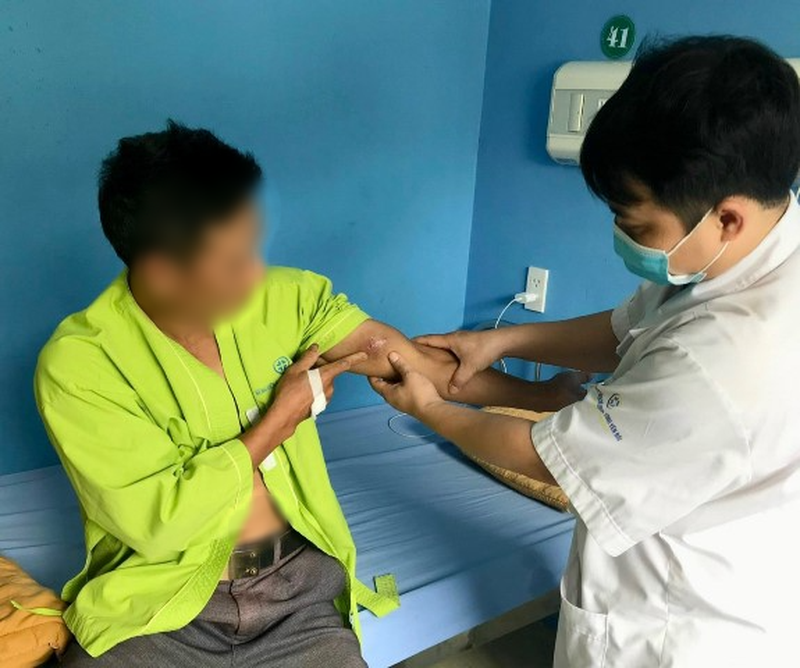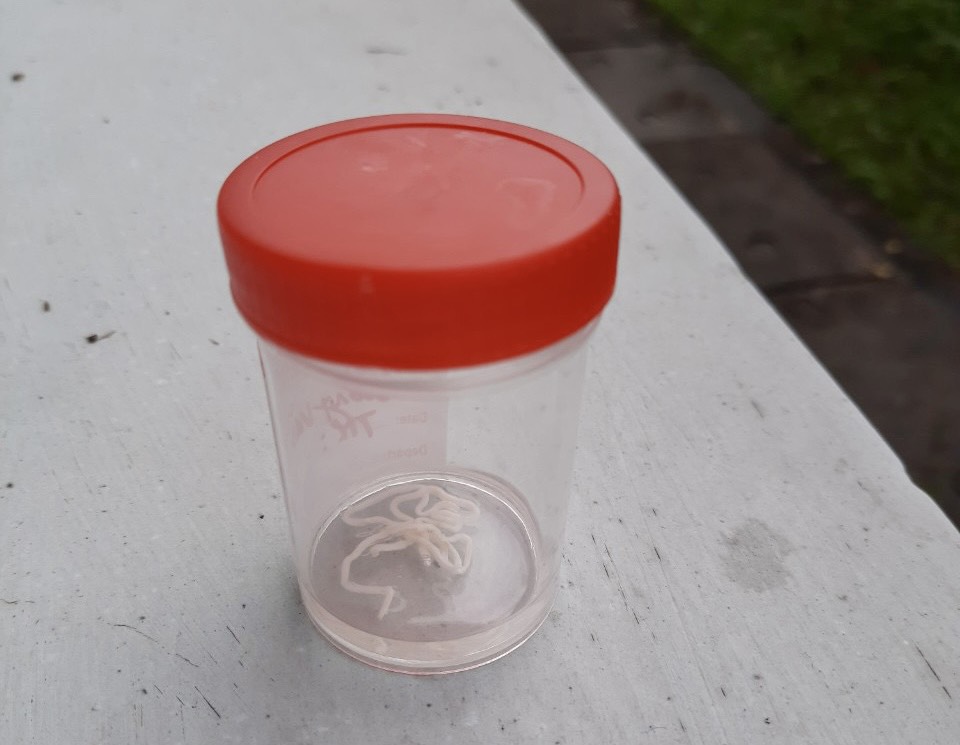The man pulled out 2 dragon worms from the swollen blocks on his body

The doctor checks the patient’s condition.
It is known that the patient has a history of drinking spring water, eating fish salad… and have not dewormed for many years now. About a month before the day of admission, the patient at home discovered swelling and swelling in the chest, arm, and left thigh, recently broken, purulent, and pulled out 2 worms about 7-8cm long. No treatment at home.
On June 6, the patient went to Yen Bai Provincial General Hospital for examination in a state of swelling in the chest, left arm and left thigh, pressing pain, pus discharge. Skin and mucous membranes are pale pink, no edema, no bleeding, no enlarged peripheral lymph nodes, no palpable thyroid gland. No focal nerve paralysis, no ascites in abdomen, normal heart and lung.
Subcutaneous ultrasound showed that the skin and subcutaneous tissues in the chest wall had several scattered hypoechoic foci, a large size 35x12mm, the left arm distance at the ultrasound site had a 9x3mm echogenicity, the back of the left thigh has a 7x4mm silencer.
The patient was diagnosed with dragon worm infection (Dracunculus), the doctors cleaned, removed all the worms, and used the antibiotic Metronidazol to treat superinfection of the ulcer.
Currently, the patient is awake and in good health, being monitored and continues to be treated at the Provincial General Hospital.

Dragon worms are removed from the patient’s body.
According to doctors, dragonworm disease, scientifically known as Dracunculus medinensis, causes disease in humans and animals. The disease is transmitted through the gastrointestinal tract and enters the body through drinking water or food such as rare, live aquatic animals (fish, frogs, frogs, shrimp…) containing dragonworm larvae. Anyone of any age can be infected, and the incidence can be as high as 60%.
This is a roundworm, the longest in the group of worms infecting humans, adult female worms are 1-2 mm wide, about 70-120cm long, each female worm can carry up to 3 million larvae, male worms 4cm short. , died after mating with female worms.
Dragonworm disease has been eliminated globally by the World Health Organization (WHO) since 2018, WHO has certified 199 countries, territories and regions with no cases of the disease.
The disease has an incubation period of 9-14 months and progresses silently, rarely causing direct death but can be fatal due to complications of the disease such as secondary infection, cold abscess appearing at the site of death. , joint infection…) paralysis of the spinal cord, hemiplegia due to dead worms and calcification. These complications limit the ability to study, lose the ability to work, or become exhausted due to the prolonged course of the disease. WHO assesses that the disease is a burden of disease, an economic burden for families and society.
When the disease is first detected, there are often no special symptoms detected. About 1 year after infection, when the female worms begin to move and develop in the subcutaneous tissue, the patient may have the following signs: low-grade fever, dizziness, vomiting, nausea, diarrhea, redness, Stiffness and itching at the site of localized worms.
In the next few days, the swelling bursts and secretes yellow fluid, at the lesion site, a white worm is found from the inside out (usually the head of the worm), if there is no impact, the worm will usually die on its own. come out completely after 3-6 weeks.
In some cases, the patient pulls himself, but if he breaks it halfway, it will cause the worm larvae and the toxins released to spread along the worm’s path, making the infection worse, more severe, and can lead to other infections. complications such as sepsis, ankylosing spondylitis, abscesses caused by worms die before excreting worm larvae or tetanus.
To prevent dragonworm disease, people need to perform well on food hygiene and safety: eat cooked, drink boiled; Use separate utensils for processing cooked and raw foods (cutting boards, knives, blenders, bowls, plates, etc.), especially hand hygiene after handling raw foods.
Cook thoroughly when using aquatic foods (frogs, fish, shrimp…), bury or burn, or sprinkle with lime powder the intestines, head… after processing to limit the spread of infection.
Do not let dogs and cats eat raw aquatic foods (frogs, fish, shrimp…).
Patients in the advanced stage of Guinea disease should not bathe, wash in ponds, lakes, or other domestic water sources to avoid spreading larvae into the environment; Clean the wound, bandage the affected area regularly until the worms are completely removed from the body.
at Blogtuan.info – Source: Afamily.vn – Read the original article here



